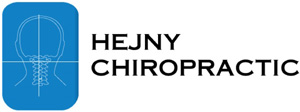 Vertigo, for many sufferers, is an exceedingly inconvenient condition, sometimes resulting in the person dropping to the ground due to a sudden episode. If you have ever spun around long enough that when you stand still your equilibrium can’t catch up, and the world continues to spin about you, then you have experienced what it is like to have an episode of vertigo. Here are a few symptoms that coincide with vertigo:
Vertigo, for many sufferers, is an exceedingly inconvenient condition, sometimes resulting in the person dropping to the ground due to a sudden episode. If you have ever spun around long enough that when you stand still your equilibrium can’t catch up, and the world continues to spin about you, then you have experienced what it is like to have an episode of vertigo. Here are a few symptoms that coincide with vertigo:
- Hearing changes
- Spatial disorientation
- Loss of balance
- Vision disturbances
- Nausea or vomiting
Living with vertigo is hard to imagine for those not suffering from it. The hazard of random onset of the symptoms makes it inconvenient and can limit your freedom to drive, work, or even spend quality time with family. Understanding the nature of this condition and its connection to what is happening in your body is key to finding the best form of relief care.
Table of Contents
Balance and the Body
The vestibular system is responsible for sending accurate signals to the brain regarding your body’s position, or spatial awareness, which helps you keep your balance. This is not something most of us think of, but we definitely enjoy our ability to be in control of our body despite changes in the footing beneath us. Our vestibular system helps ensure that these activities happen without accident. However, for those who have vertigo, they could suddenly experience problems with their vision, confusion, and loss of balance due to a disruption to this very important system.
Your brain must receive accurate information to help the body sustain balance, which requires the integrative assistance of the following:
- Vestibular System – Tucked in your inner ear are key elements for your body’s equilibrium, spatial awareness, and sense of motion.
- Sight – Your vision sends information to the brain about where you are in relation to the world around you.
- Proprioception – Through your sense of touch, your body receives messages from all over your body. These messages share information like how much pressure is being pressed into each one of your feet as you walk, and so on. All of these pieces of information help the brain guide the body through the environment around you.
The only way this information is able to complete its passage to the brain is through open pathways. When the information gets disrupted, this can result in confusion for the brain, leading to symptoms like vertigo or instability on one’s feet.
To learn more about the connection between head and neck injuries and vertigo, download our complimentary e-book by clicking the image below.
The Brainstem’s Connection to Vertigo
An often overlooked member of this process is the sheltering encasement of the brainstem called the axis and the atlas. These two vertibrae work together to both sustain the head and allow it free movement while sheltering the vital nerves responsible for movement in the entire body. This collection of nerves hidden within is the great meeting place of the central nervous system, and the immense amounts of information travelling to the brain. The brain stem is like the mail sorter at the post office, accurately sending each message to the necessary address where it will be interpreted. For example, it sends the information needed for the vestibular system, vision, and proprioception to work together to maintain balance for the entire body. Protecting the brainstem from any potential damage is so exceedingly important that it is entirely surrounded by the upper vertebrae.
Common Vertigo Care Options
Finding the right relief options for any condition requires a through examination, accurate health history, and referencing all the occurring symptoms. Once the specific cause of the vertigo is found, there are several relief options. Some more frequently offered care choices are listed below:
- Canalith repositioning maneuvers: This procedure is specifically used to treat benign paroxysmal positional vertigo, a condition where calcium crystals have built up in a part of the ear where they cause dizziness and imbalance. The maneuvers actually move the crystals to a different part of the ear where they won’t cause these symptoms.
- Dietary changes: Those suffering from Meniere’s disease can often benefit from lowering the sodium intake so that their stored fluid levels drop enough to affect the amount fluid build up in the inner ear.
- Medications: The more prevalent recommended medications are nerve suppressants, antihistamines and anti-nausea drugs. Unfortunately, these come with possible side effects and only treat the symptoms.
Upper Cervical Chiropractic Relief Care Can Eliminate Vertigo Symptoms
Finding a natural form of relief from vertigo symptoms has become more and more popular, especially to actually overcome the condition entirely. Chasing away symptoms by popping pills and limiting one’s diet can cause anyone to grow weary after a length of time. Upper cervical chiropractic care has become more and more common as an alternative to these methods. The reason behind this choice is not just its effectiveness in providing a sustainable solution. These dedicated chiropractors focus on the axis and atlas where the brainstem is housed. Adjusting misalignments in this part of the body can resolve many of the communication errors occurring between the body and the brain. These errors can result in confusion between the different subsystems responsible for equilibrium and sense of balance. Another possible outcome of these errors remaining uncorrected is that it can result in agitation of the eustachian tube, a key player in vertigo symptoms.
Our patients receive thorough and gentle care at Hejny Chiropractic as we focus our attention on the uppermost spine. A healthy upper spine affects so many parts of life and physical well-being, so we are exceedingly careful and well practiced with our adjustments. In many cases, a disruption in upper cervical alignment could be the cause of multiple health conditions, including vertigo. We gently guide the vertebra back to their normal placement, calming the area around the brainstem and along the entire spine. Many patients report long term relief in the severity or frequency of the vertigo episodes, and some patients experience permanent reprieve from Meniere’s symptoms.
References:
http://vestibular.org/understanding-vestibular-disorder/symptoms
http://www.entnet.org/content/menieres-disease
To schedule a complimentary consultation with Dr. Hejny, call our Spring Lake Park office at 763-230-0116. You can also click the button below.
 If you are outside of the local area, you can find an Upper Cervical Doctor near you at www.uppercervicalawareness.com.
If you are outside of the local area, you can find an Upper Cervical Doctor near you at www.uppercervicalawareness.com.
